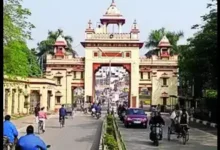Uttar Pradesh: RLD Chief Jayant is there, but the Jats are tough on the BJP
Union Home Minister Amit Shah took an extraordinary step two days before voters in the western Uttar Pradesh assembly elections of 2022 cast their votes. He went door-to-door with hundreds of BJP members, urging Jats in particular to support party candidates.

This occurred just after the BJP’s fruitless negotiations to create a pre-election coalition with the Rashtriya Lok Dal (RLD), which is headed by prominent Jat politician Jayant Chaudhary, the grandson of former Prime Minister Chaudhary Charan Singh. Jayant famously said, “Main koi chavanni nahin jo palat jaoon” (I am not a coin that flips), after deciding to remain in the SP. Time jumps to February 2024.
Charan Singh was awarded the Bharat Ratna by Prime Minister Narendra Modi two months before the Lok Sabha elections. In response, Jayant said, “Dil Jeet Liya” (earned hearts). This won over the RLD chief. The BJP achieved a significant strategic victory by cracking the Jat problem, which made it easier for them to enter the Wild West of Uttar Pradesh politics before the election.
Just 2% of voters in Uttar Pradesh are Jats. Political observers, however, assert that the Jats’ power originates from their concentration in a dozen western Uttar Pradesh districts, where they account for 20–25% of the electorate.
The BJP, which has ruled the state since 2014, has partnered with the RLD, a party that is thought to support the Jat group, demonstrating the clear importance of the Jat factor.
Primarily engaged in farming, the Jats have considerable economic sway over the area. The 2009 elections demonstrate the magnitude of Jat impact on votes, as the BJP managed just three seats in western UP while the RLD (then a junior member of NDA) gained five seats thanks to Jat support.
However, analysts point out that Jats were polarized in favor of the BJP during the 2014 elections, which were conducted in the wake of the 2013 Muzaffarnagar riots, and that this led to the saffron party’s resounding success in the area. In the Lok Sabha elections of 2019, this pattern persisted.
Nonetheless, concerns surfaced for the BJP during the 2022 Assembly elections when Jats were split between their allegiance to the BJP and Jayant, an ally of the SP. Furthermore, the community turned away from the BJP due to the contentious agriculture legislation at the Center. The harm was done even if the three agricultural ordinances were removed before to the elections.
The result of the BJP’s defeat was the RLD’s triumph. RLD’s vote share increased as a consequence, and in 2022 there were eight seats instead of only one. It was understandable why, in spite of resistance from the Jat leaders of the party, the BJP hierarchy went all out to court Jayant.
According to a senior BJP official, “the thinking was that with RLD by our side, whatever discontent among farmers is left would go away and Jats will have no dilemma over which camp to support.” “Jats’ dominating social rank gives them a great deal of power in society. They have more weaponry than their own community, he said.
Economic sway
Primarily engaged in farming, the Jats have considerable economic sway over the area. The 2009 elections demonstrate the magnitude of Jat impact on votes, as the BJP managed just three seats in western UP while the RLD (then a junior member of NDA) gained five seats thanks to Jat support. Experts point out, however, that Jats were polarized in favor of the BJP in the 2014 elections, which were conducted in the wake of the 2013 Muzaffarnagar riots, leading to the party’s resounding triumph.
The “J” Aspect
The community’s significance and influence are evident given that the BJP has partnered with the RLD, a party that is thought to support the Jats.
About 2% of people in Uttar Pradesh are Jats.
In around twelve LS seats in west roughly, the Jat population makes roughly 20–25% of the total.
Other caste groups are influenced by their high social standing.
Most of them are farmers who cultivate cane.
In Baghpat, Mathura, Fatehpur Sikri, Muzaffarnagar, Aligarh, Kairana, Amroha, Bijnor, and Hathras, they are present in significant numbers.






